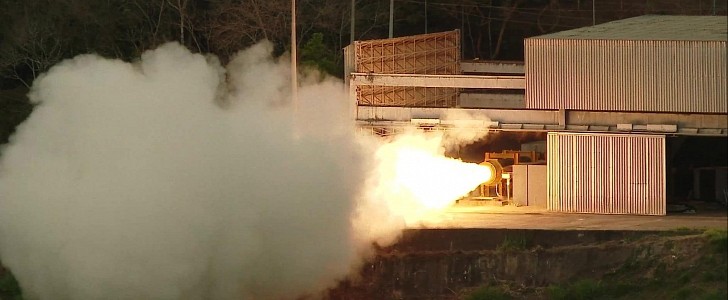Nations across the globe are becoming more and more involved in the booming space industry. From the UK and Norway to Japan and South Korea, technological innovations related to space are being developed fast. One of the latest is Brazil’s new solid-propellant rocket motor, which will power the future VLM-1 rocket.
The German Aerospace Center (DLR) announced that Brazil’s new solid-propellant rocket motor was successfully tested at the beginning of the month. The S50 isn’t just any motor, but the largest rocket motor ever made in Brazil. It contains over 13 tons (12 metric tons) of solid propellant, and it incorporates cutting-edge technologies, such as carbon-fiber-reinforced composites for the engine casing.
The S50 is designed to be lighter and more efficient than standard motors, and it’s called a “solid-propellant motor” because both the propellant and oxidizer in the casing are solid.
The Aeronautics and Space Institute in Brazil (IAE) conducted the test on behalf of the Brazilian Air Force (FAB) and the Department of Aerospace Science and Technology (DCTA). The static firing test took place at the operational area of Usina Coronel Abner (UCA) in São José dos Campos, and it lasted 84 seconds. With this test successfully completed, the S50 can enter the final stages of development.
This innovative rocket motor will power Brazil’s VLM-1 launch vehicle, part of the Microsatellite Launch Vehicle Project, but also a future European sounding rocket, called VS-50. Sounding rockets are designed for scientific experiments in space conditions. According to DLR, these types of experimental rockets can reach altitudes of up to 270 km (168 miles), which equals to almost six minutes in microgravity conditions, before they re-enter Earth’s atmosphere.
The future VS-50 rocket, powered by the S50 motor, will enable experiments in microgravity conditions that can last up to 30 minutes, as well as hypersonic conditions, at top speeds of Mach 15. This will help accelerate the development of space transportation, reusability, and hypersonic research.
The first rocket powered by an S50 motor is set to be launched in 2023.
The S50 is designed to be lighter and more efficient than standard motors, and it’s called a “solid-propellant motor” because both the propellant and oxidizer in the casing are solid.
The Aeronautics and Space Institute in Brazil (IAE) conducted the test on behalf of the Brazilian Air Force (FAB) and the Department of Aerospace Science and Technology (DCTA). The static firing test took place at the operational area of Usina Coronel Abner (UCA) in São José dos Campos, and it lasted 84 seconds. With this test successfully completed, the S50 can enter the final stages of development.
This innovative rocket motor will power Brazil’s VLM-1 launch vehicle, part of the Microsatellite Launch Vehicle Project, but also a future European sounding rocket, called VS-50. Sounding rockets are designed for scientific experiments in space conditions. According to DLR, these types of experimental rockets can reach altitudes of up to 270 km (168 miles), which equals to almost six minutes in microgravity conditions, before they re-enter Earth’s atmosphere.
The future VS-50 rocket, powered by the S50 motor, will enable experiments in microgravity conditions that can last up to 30 minutes, as well as hypersonic conditions, at top speeds of Mach 15. This will help accelerate the development of space transportation, reusability, and hypersonic research.
The first rocket powered by an S50 motor is set to be launched in 2023.






